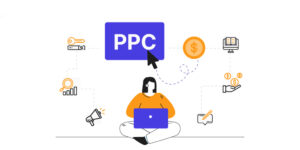Introduction
Programmatic ads have emerged as a powerful tool, reshaping how brands connect with their target audience. As we enter 2024, it’s essential to scrutinize the landscape and weigh the pros and cons of programmatic advertising to make informed decisions for effective marketing strategies.
Pros
- Precision Targeting: Programmatic advertising leverages sophisticated algorithms and data analytics to precisely target audiences. Advertisers can define specific demographics, behaviors, and interests, ensuring their ads reach the right consumers. This precision leads to higher engagement rates and better conversion possibilities.
- Real-time Optimization: One of the significant advantages of programmatic ads is the ability to optimize campaigns in real time. Automated systems analyze performance metrics and adjust the strategy accordingly, ensuring that resources are allocated to the most effective channels and placements. This flexibility allows advertisers to stay agile in response to changing market dynamics.
- Efficiency and Cost-effectiveness: Programmatic advertising streamlines the ad-buying process, reducing the need for manual intervention. This efficiency translates into cost savings as it minimizes human errors and maximizes the utilization of ad budgets. Advertisers can also benefit from competitive pricing through real-time bidding, potentially securing ad inventory at optimal rates.
- Cross-channel Integration: Programmatic advertising facilitates seamless integration across various digital channels. Advertisers can orchestrate cohesive and synchronized campaigns, whether display, video, social media, or mobile. This cross-channel approach enhances brand visibility and ensures a consistent message across multiple touchpoints.
Cons
- Ad Fraud and Brand Safety Concerns: The automated nature of programmatic ads opens the door to potential ad fraud, where bots generate fake impressions and clicks. Advertisers may face challenges ensuring brand safety, as ads may appear alongside inappropriate content. Brands must implement robust measures to combat fraud and maintain a positive brand image.
- Lack of Transparency: Programmatic advertising operates through complex algorithms and ad exchanges, sometimes leading to a need for more transparency in the ad placement process. Advertisers may need help tracing where their ads are displayed, raising concerns about the quality and relevance of placements.
- Over-reliance on Data: While data-driven targeting is a strength of programmatic advertising, an over-reliance on data can lead to privacy concerns. As regulations become more stringent, advertisers must navigate the balance between personalized targeting and respecting user privacy to avoid legal complications.
- Ad-blocker Impact: With the rise in ad-blocker usage, programmatic ads face the challenge of reaching users who actively block digital advertisements. Advertisers must explore creative strategies to overcome ad-blocker barriers and deliver compelling content that resonates with their audience.
Conclusion
As we delve into the world of programmatic ads in 2024, it’s evident that the landscape offers opportunities and challenges. Advertisers must carefully weigh the pros and cons, adapting their strategies to maximize the benefits while mitigating potential risks. When executed thoughtfully, programmatic advertising remains a powerful tool for reaching and engaging target audiences in the dynamic digital marketplace.
To learn more or to acquire our services, please contact us at info@paypercampaign.com





